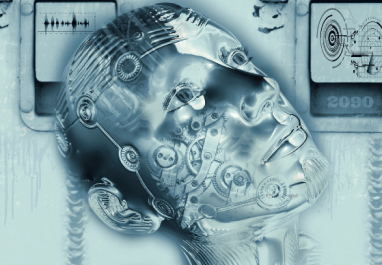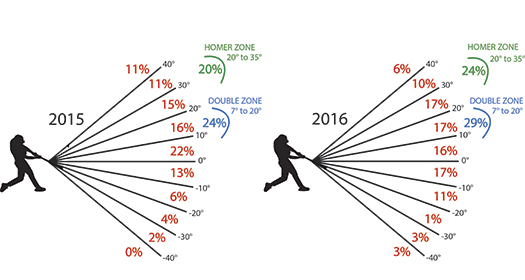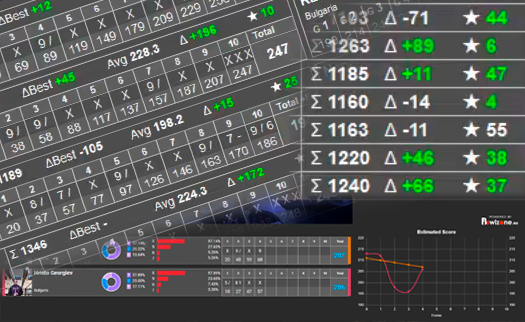Artificial Intelligence (AI)
AI in the world

If you look in Wikipedia for a definition of AI you will find:
“Artificial intelligence (AI), sometimes called machine intelligence, is intelligence demonstrated
by machines, in contrast to the natural intelligence displayed by humans and other animals.”
This, of course, is a very straightforward definition, but what we make out of it?
By commonly mistaking “intelligence” for “consciousness” we tend to associate AI with human emotions
and the way we address and treat the world.
This inevitably ends up in “The Matrix” and “Terminator”, so a good portion of us tend to think that
if AI is not outright evil, it is at least something to be careful about.
Even if we stick just to the definition of “intelligence” as:
“The ability to perceive or infer information, and to retain it as knowledge to be applied towards
adaptive behaviors within an environment or context.”
and try to apply it to a computer, we still tend to imagine a thinking machine that at least plays
chess or does some human task.
Actually nowadays AI is referred to a broad area of data processing where computers do things that
humans can’t, not because of some special non-human intelligence but because of the sheer amount of
data that needs to be processed.
Search algorithms, cognitive services and big data analytics are all part of the AI transformation,
but not because they are difficult to be defined or understood by a human, but because they operate
on amounts of data that are completely outside the range of a human brain.
AI in Sports
The area of AI that is most applicable to sports in general is big data analytics.
The gap between the top athletes and teams in any sport is marginal, yet very difficult to
close. It
has been believed for centuries that the human muscle is the difference between a champion and
anybody else.
Hence, any athlete in any sport was sent to the training ground or practicing range to spend
countless hours teaching his muscles to behave better and more appropriate hoping to get an edge
over his competitors.
This is still mostly the case today and while one can see diminishing returns after a certain
point
of such training, this part of any sports is still the foundation to build on top of.
In 1921 Rafael Sabatini published a great adventure novel – “Scaramouche” which is still a
classic
today.
In a very uncharacteristic fictional episode in it, the author described an untrained swordsman
quickly becoming an overwhelming master by reading and analyzing data more than wielding his
rapier.
While this was a pure fiction a century ago, it is a startling reality today.

Champions
Take as an example one of the best individual sports today – tennis.
In 1969 Rod Laver has completed his second calendar year Grand Slam – an achievement no male athlete
has ever replicated.
As a result he is one of the very few people in the history of sports that has a stadium (Rod Laver
Arena) and a tournament (Laver Cup) that are named after him while being alive.
How would Rod Laver do today against Rafael Nadal? Fortunately there is video material coming from
his time so experts can answer this question easily without putting this hypothesis to test.
The truth is he does not even stand a chance. What is wrong? The game is the same and the human body
has not evolved at all for 50 years?
The answer lies in the weapon that Nadal and his colleagues today have that was not available to Rod
Laver. It is known today as Biotech.
And even the Bio component of it that deals with preparing the muscles and bodies of the
contemporary athletes to perform optimally relies heavily on the Tech part that analyses an ocean of
data to propose the optimal play and recovery strategy.
So if we bring the 1969 Rod Laver to Rolland Garros today to face Nadal, we will be replaying the
Bertrand des Amis vs. Andre-Louis Moreau duel from Sabatini’s classic – a match that only one side
is equipped to play.
It is no wonder that no matter which sport we turn to, we can see an increasing amount of people
with tablets that are way more important than the conditional trainers alongside them.
As part of this transition we are entering an age where a completely different type of sports emerge
– e-sports – that have nothing to do with muscles but is all about data analytics.
AI in bowling

How about data analytics in bowling? Bowling is a game that is easily described in numbers.
It does not depend on a brilliant strategy to outsmart your opponent, but rather compete indirectly
with a number of other competitors.
Each throw and its environment can be described with a finite (yet large) set of numbers – boards,
speeds, rotations, oil quantities, degrees etc.
Armed with the contemporary AI analytics engine each bowler should be in perfect clarity about what
he/she needs to do every single throw.
Yet, this is not the case. Even today the top bowlers are still differentiated from the rest by the
subtle ability to change a ball on time rather than wasting precious shots before doing so.
Why the bowler even need to worry about that? Does a F1 pilot carefully observe and think about
whether a tire change is needed on a particular lap? No. He knows that way before the race has even
begun.
And he knows that because an army of analysts armed with AI processing power had analyzed the data
and have come to that conclusion. Why such thing does not happen in bowling?
One obvious answer is that there is less money in bowling and access to new and expensive technology
is limited.
This is true but technology evolves and today powerful cloud based AI services are available to
analyze any data at an affordable price.
This is why a sport like bowling has now a chance to take the benefits of such technologies and
allow each bowler, from the top players to the amateur, to benefit by knowing what he/she needs to
do rather than struggling to find it alone.
AI in Bowlzone
We, at Bowlzone, believe that complex AI algorithms can be put to service regular bowlers
without
the need to fully understand their complexity.
We believe also that the time is right as those algorithms are available at a very affordable
price.
Therefore we aim to develop our platform so they can be used by anyone in bowling. As an
illustration, here is how we tackle the scoring comparison problem.
From a purely computational perspective, bowling is one of the most complex sports probably
overshadowed just by decathlon and a few others.
It is difficult even for an experienced bowler to compare his/her results with another
competitor
especially if they are not on the same frame during a game.
Many bowlers have developed simple technique of estimating their score so they can compare it
against something else.
These techniques very rarely produce reliable results and countless bowling dramas have
developed
due to simple miscalculations.
Let’s do some math. Mathematical expectation can be defined with the following formula:


where X is a random variable with a finite number of finite outcomes x1, x2, …., xk, occurring with
probabilities p1, p2, …., pk respectively.
This applied to a series of bowling games for a particular bowler may produce the mathematical
expectation for his game even before it begins.
Of course the applicability of each past game against the current conditions (hall, lane, oil
patter, game number etc.) is subject to other mathematical equations including weighted averages and
normal distributions but at the end a number can be calculated.
This number is then further applied towards each individual frame within the game applying again the
mathematical expectation so that it can produce a statistically stable picture of each bowlers play.
This simple mechanism is then used to compare bowlers playing in a single or different squads
producing accurate live rankings that are helpful not only to observers and fans but the the
competitors themselves.
Of course this is a very simple example of how math can help understanding better what happens on
the lanes.
We at Bowlzone have defined our mission to make the playing experience easy and understandable even
if the underlying technology is not. Whether you are a bowler, a coach, a tournament organizer or a
federation – we have advanced science and AI to help with your quest for excellence.





